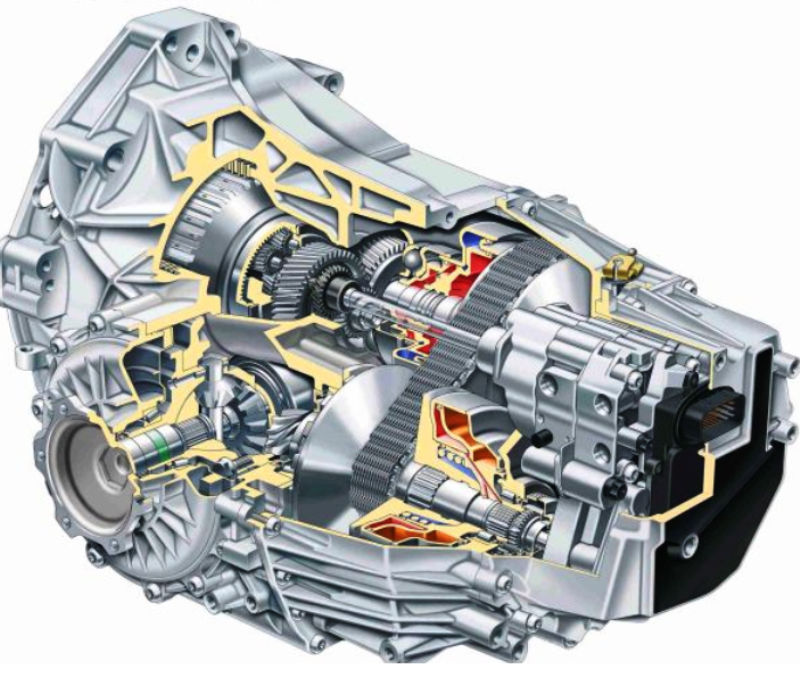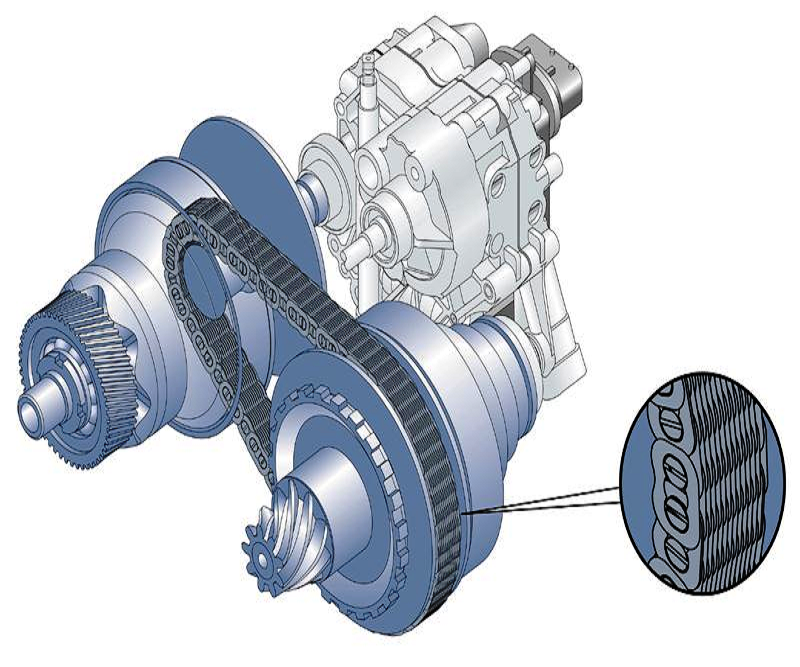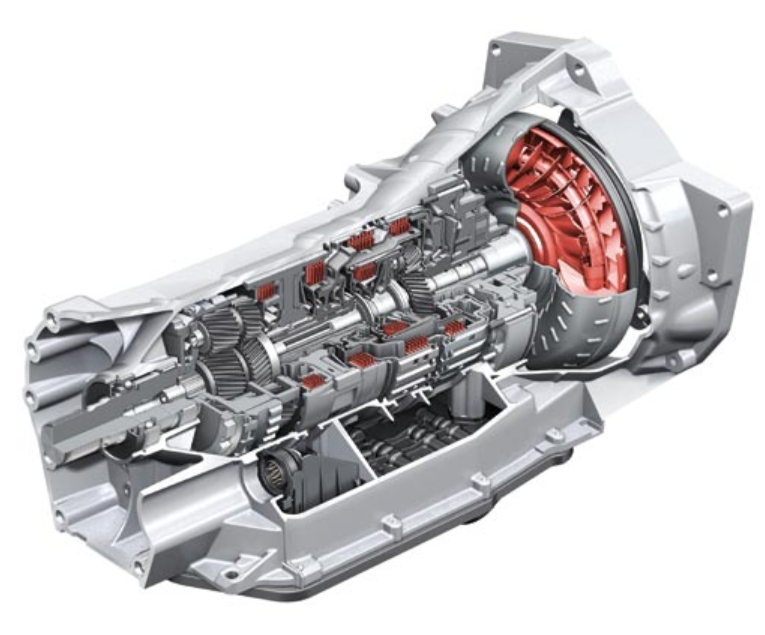Audi A4 B7: Multitronic vs. Tiptronic Transmission
With three possible transmission in the B7 generation Audi A4, shopping for one can get a bit confusing. If you are sure you want an automatic, things still aren't settled, because you can choose from a Continuously Variable Transmission (CVT) in the Multitronic, or the conventional six speed Tiptronic automatic. Which one is right for you?
This article applies to the Audi A4 B7 (2005-2008).
Years ago, choosing the right transmission typically came down to manual or automatic, and maybe a choice of how many gears. Audi alone offers several different versions of a traditional manual, a dual clutch automated manual, a CVT automatic, and conventional multi-speed automatics on their various cars. In the case of the Audi A4 B7 generation, two fairly unique automatic transmission offerings were available from the factory, both with state of the art computer control, and the option of shifting yourself if you want to. That said, cutting edge equipment under rapid development can experience growing pains and suffer from reliability problems. If the 2005 to 2008 Audi A4 is on your shopping list, you'll find some models equipped with the Multitronic CVT transmission and others with a Tiptronic. This article will provide a brief overview of thier strengths and weaknesses.
Component Breakdown
Multitronic Transmission (CVT)
Audi's Continuously Variable Transmission (CVT), called the Multitronic, is a step-less transmission that is designed to keep the engine operating at its optimum speed for any given driving situation. The variator unit, as shown in Figure 2, is comprised of two disc sets and conical pulleys coupled by a heavy-duty link-type chain. The transmission's "Dynamic Regulating Program" monitors various conditions such as road speed, gradient, engine load, throttle position, etc. to actuate a hydraulic valve body and continuously alter the position of the chain on the pulleys, thus altering the output ratio of the transmission. The Multitronic transmission eliminates a traditional torque converter and allows the chains to slip on the pulleys when the vehicle is stopped. The idea behind the Multitronic was to improve upon the Tiptronic conventional automatic transmission by reducing weight, improving fuel economy, and offering an infinite number of gear ratios to meet the demands of both performance and economical styles of driving.

Figure 1. Multitronic transmission cutaway. 
Figure 2. Variator assembly.
Tiptronic Transmission
Originally developed by Porsche, the Tiptronic transmission is more of a traditional torque converter-based transmission that allows the driver to manually control the shift points if desired. The Tiptronic transmission is considered by many to be the pinnacle of conventional automatic transmission development. The advanced computer software is able to detect the driving situation and alter its shift points, while even allowing engine braking similar to that of a manual transmission. If the driver is feeling sporty, the shift lever can be positioned into manual mode and the + and - buttons can be used to shift gears manually. While not as direct as the shifting action on a manual transmission, it will keep the engine in any particular gear until engine redline if the driver demands it. When decelerating it will let the engine rpm drops to idle, after which the transmission will shift itself down to the next gear to prevent engine damage. While it will never be as involving as a proper stick shift, or as efficient as a dual clutch automated manual, it is a good compromise for those who will see a regular commute, but still yearn for that occasional sporty drive through the twisties.

Scheduled Maintenance
Multitronic
Audi recommends a fluid and external filter change every 35,000 miles, as well as a 90,000 mile internal filter maintenance interval. CVT's are notoriously hard on the transmission fluid, so it is prudent to stay on top of transmission service to ensure a long service life.
Tiptronic
Fluid and filter replacement is recommended between 30,000 to 60,000 miles, depending on the type of driving the car sees. Many trustworthy mechanics suggest never flushing the fluid on a high mileage car that has had deferred maintenance, like 90,000 miles without the transmission fluid changed, as a fluid flush can free settled debris and sludge that have the ability to clog small valve body passages and shorten transmission life. However, if you do have a high mileage car with poor maintenance, draining and filling the fluid and changing the filter is a good idea, but you must be careful to disturb as little as possible internally when you do it.
Common Questions
Does the Multitronic shift gears?
Yes! Although the Multitronic does not have stepped gear ratios that you will feel while driving in automatic mode, it has a set of pre-selected ratios when in manual mode to give the sensation of shifting gears.
How does fuel economy differ between the two transmissions?
The Multitronic transmission will typically provide an 8-10% improvement in fuel economy over the Tiptronic, according to Audi and EPA estimates on comparable cars.
How does the driving experience differ?
The Multitronic gearbox brings smoothness to a new level, as there are no noticeable shift points while accelerating/decelerating. Although the Tiptronic has greatly improved its smoothness over the years, there are still distinguishable shifts as it works through the ratios. While neither transmission feels as directly connected to the engine as a manual transmission, most agree that the Multitronic gives an odd feeling that the transmission is slipping while under acceleration because the engine rpm is held at a relatively steady rate. On the other hand, some complain that the Tiptronic has a laggy feeling between shifts that makes it feel lazy.
Is the Multitronic transmission available with any engine configuration?
No. The Multitronic was only an available option on front-wheel drive models. If shopping for a Quattro all-wheel drive model, choices are between the 6-speed manual and 6-speed Tiptronic.
Common Issues
Multitronic Issues
Unfortunately, the multitronic transmission has been plagued with severe catastrophic problems that can render it undriveable. Serious problems include slipping above 30 mph, loss of drive or reverse, shuddering during takeoff, and surging at speed. Many of these problems have been linked to the clutch pack, which was upgraded on later generations to include an additional friction plate for increased holding power, and upgraded as a service bulletin on failed transmissions. Additionally, many problems have been found in the valve body that controls the movement of the chain along the pulleys. It is worth noting that Audi was involved in a class action lawsuit related to roughly 60,000 A4 and A6 models equipped with Multitronic transmissions, and part of the resolution was extended warranty coverage and payouts for previous transmission repairs to those owners. With such problems, Audi recently eliminated the Multitronic transmission line in favor of dual clutch gearboxes. If shopping for a Multitronic equipped car, be sure the transmission has been properly maintained and/or upgraded with new components before considering buying it.
Tiptronic Issues
Unlike the Multitronic transmission, the Tiptronic box has not had any widespread issues and is typically considered the more reliable transmission of the two, especially when keeping power levels stock. When a problem crops up in the Tiptronic, it is likely slipping of the higher gear clutch packs, a faulty torque converter, or a faulty solenoid responsible for shifting. Audi often releases software updates for the Tiptronic control unit, so it is a good idea to check service records to ensure the latest software is installed for the best operation.






